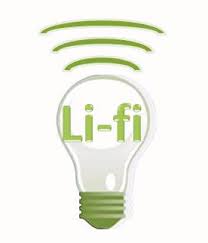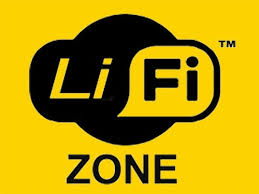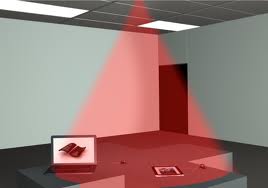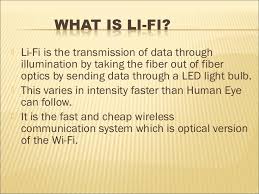Introduction:
Li-Fi, or light fidelity, refers to 5G visible light communication systems using light from light-emitting diodes (LEDs) as a medium to deliver networked, mobile, high-speed communication in a similar manner as Wi-Fi. Li-Fi could lead to the Internet of Things, which is everything electronic being connected to the internet, with the LED lights on the electronics being used as internet access points. The Li-Fi market is projected to have a compound annual growth rate of 82% from 2013 to 2018 and to be worth over $6 billion per year by 2018.
History:
Professor Harald Haas, from the University of Edinburgh in the UK, is widely recognised as the original founder of Li-Fi. He coined the term Li-Fi and is Chair of Mobile Communications at the University of Edinburgh and co-founder of pureLiFi.
The general term visible light communication (VLC), includes any use of the visible light portion of the electromagnetic spectrum to transmit information. The D-Light project at Edinburgh’s Institute for Digital Communications was funded from January 2010 to January 2012.Haas promoted this technology in his 2011 TED Global talk and helped start a company to market it. PureLiFi, formerly pureVLC, is an original equipment manufacturer (OEM) firm set up to commercialize Li-Fi products for integration with existing LED-lighting systems.
VLC(Visible light communications):
Visible light communications (VLC) signals work by switching bulbs on and off within nanoseconds,which is too quickly to be noticed by the human eye. Although Li-Fi bulbs would have to be kept on to transmit data, the bulbs could be dimmed to the point that they were not visible to humans and yet still functional. The light waves cannot penetrate walls which makes a much shorter range, though more secure from hacking, relative to Wi-Fi.Direct line of sight isn’t necessary for Li-Fi to transmit signal and light reflected off of the walls can achieve 70 Mbps.
Construction:
The LIFI™ product consists of 4 primary sub-assemblies:
• Bulb
• RF power amplifier circuit (PA)
• Printed circuit board (PCB)
• Enclosure
The PCB controls the electrical inputs and outputs of the lamp and
houses the micro controller used to manage different lamp functions.
An RF (radio-frequency) signal is generated by the solid-state PA
and is guided into an electric field about the bulb. The high
concentration of energy in the electric field vaporizes the contents
of the bulb to a plasma state at the bulb’s center; this controlled
plasma generates an intense source of light. All of these
sub assemblies are contained in an aluminum enclosure.
FUNCTION OF THE BULB SUB-ASSEMBLY:
At the heart of LIFI™ is the bulb sub-assembly where a sealed bulb is
embedded in a dielectric material. This design is more reliable than
conventional light sources that insert degradable electrodes into the
bulb.
Li-Fi, an alternative to Wi-Fi that transmits data using the spectrum of visible light, has achieved a new breakthrough, with UK scientists reporting transmission speeds of 10Gbit/s – more than 250 times faster than ‘superfast’ broadband.
The dielectric material serves two purposes; first as a
waveguide for the RF energy transmitted by the PA and second as an
electric field concentrator that focuses energy in the bulb. The
energy from the electric field rapidly heats the material in the bulb to
a plasma state that emits light of high intensity and full spectrum.
How Li-Fi Works:
The Li-Fi technology operates within the principle that light can frequently carry Signals choice to classic radio frequencies; it keeps serving given there is no blockage of any type, between the Light source and a Pc. Chi Nan, the distinct I. T Teacher at Shanghai’s Fudan College or university, who also qualified prospects the particular Li-Fi study team (which includes scientists throughout the Shanghai Institute connected with Technical Physics within the Chinese Academy connected with Sciences) have explained that, “One-watt LED Bulb may establish an Internet interconnection for four Electronic Gadgets immediately. ”, she added that, “A light fixture with embedded microchips could make data charge as fast since 150Mbps. ”.
Advancement:
More importantly, according to the experts, the development of a series of key related pieces of technology, including light communication controls as well as microchip design and manufacturing, is still in an experimental period and there is still a long way to go to make Li-Fi a commercial success.
Despite the fact that the Technology is still in the experimental period, Netizens should be excited to view 10 sample Li-Fi kits that will be on display at the China International Industry Fair that will kick off on November 5 in Shanghai.









